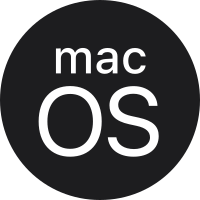For long time users of the Apple Macintosh, the DOS environment might appear confusing at first. It helps to have experience with the System Terminal and the Command Line. Once set up however a simple shortcut will be all you need.
Installing
What Is The Most Recent Os For Macbook Air
- The Apple File System (APFS) is the file system used with Mac devices running macOS 10.13 High Sierra and later, while the older Mac OS Extended file system is available for older versions of macOS. You can still use either file system for your hard drives and attached storage devices, with both having their own pros and cons.
- Supported Platforms: Chromium for Windows x86 Chromium for Windows x64 Chromium for Mac Chromium for Linux x86 Chromium for Linux x64 Chromium OS for Linux Chromium for Android.
- These are all Mac operating systems, starting with the most recent. When a major new macOS is released, it gets a new name, such as macOS Big Sur. As updates that change the macOS version number become available, this article is updated to show the latest version of that macOS.
- This guide will use the 0.74 Mac OSX version which is available for download. The 0.74 release is compiled as a Universal Binary, and will run on PowerPC and Intel based Macs. To install DOSBox, first expand the.ZIP file and copy the contents into a folder like DOSBox. Move this folder into your Applications folder.
This guide will use the 0.74 Mac OSX version which is available for download. The 0.74 release is compiled as a Universal Binary, and will run on PowerPC and Intel based Macs. To install DOSBox, first expand the .ZIP file and copy the contents into a folder like DOSBox. Move this folder into your Applications folder.
Chromium OS is an open-source project that aims to build an operating system that provides a fast, simple, and more secure computing experience for people who spend most of their time on the web. Here you can review the project's design docs, obtain the source code, and contribute.
Now you need to create a folder to MOUNT as your C: drive and hold your games. The most convenient location for this folder would be your home folder (which can be referenced as ~). In This example we will call our folder DOSGAMES. Inside this folder we can place all of the programs that we want to be available in our emulated DOS environment. Remember that while these files are buried deep in the file system with paths like ~/DOSGAMES/TESTDRV, inside DOSBox they appear as though they reside in the root of their mounted drive letter, so the above example in DOSBox would be located at C:TESTDRV (assuming that ~/DOSGAMES was mounted as C:).
Running DOSBox for the first time
Double click on the DOSBox icon in Finder to launch DOSBox for the first time. This will cause the DOSBox window to appear. By default no drives are mounted (except the DOSBox default Z:) From here you need to mount your DOSGAMES folder. Assuming you placed it inside your home folder you should be able to run this command to MOUNT the folder.
Now type this command to navigate to your newly mounted drive

Editing DOSBox preferences
After you first run DOSBox, go to the ~/Library/Preferences/ folder and open the newly created file DOSBox 0.74 Preferences. The exact folder name in the Finder may vary, depending on the language you use for OS X.
Most Recent Os X For Mac
By editing this file, you can set the system settings and initialization values that define your emulated environment. You can also add MOUNT commands to the AUTOEXECsection at the bottom of the configuration files, so that you do not have to type them in every time you start DOSBox.
Running DOSBox with custom config

Most Recent Ios For Macbook Air
You can create configuration file for individual games. It can hold specific configuration options and even commands for invoking game in the AUTOEXEC section. Then you can run DOSBox with your config by calling following command from terminal:
Most Recent Os For Mac
